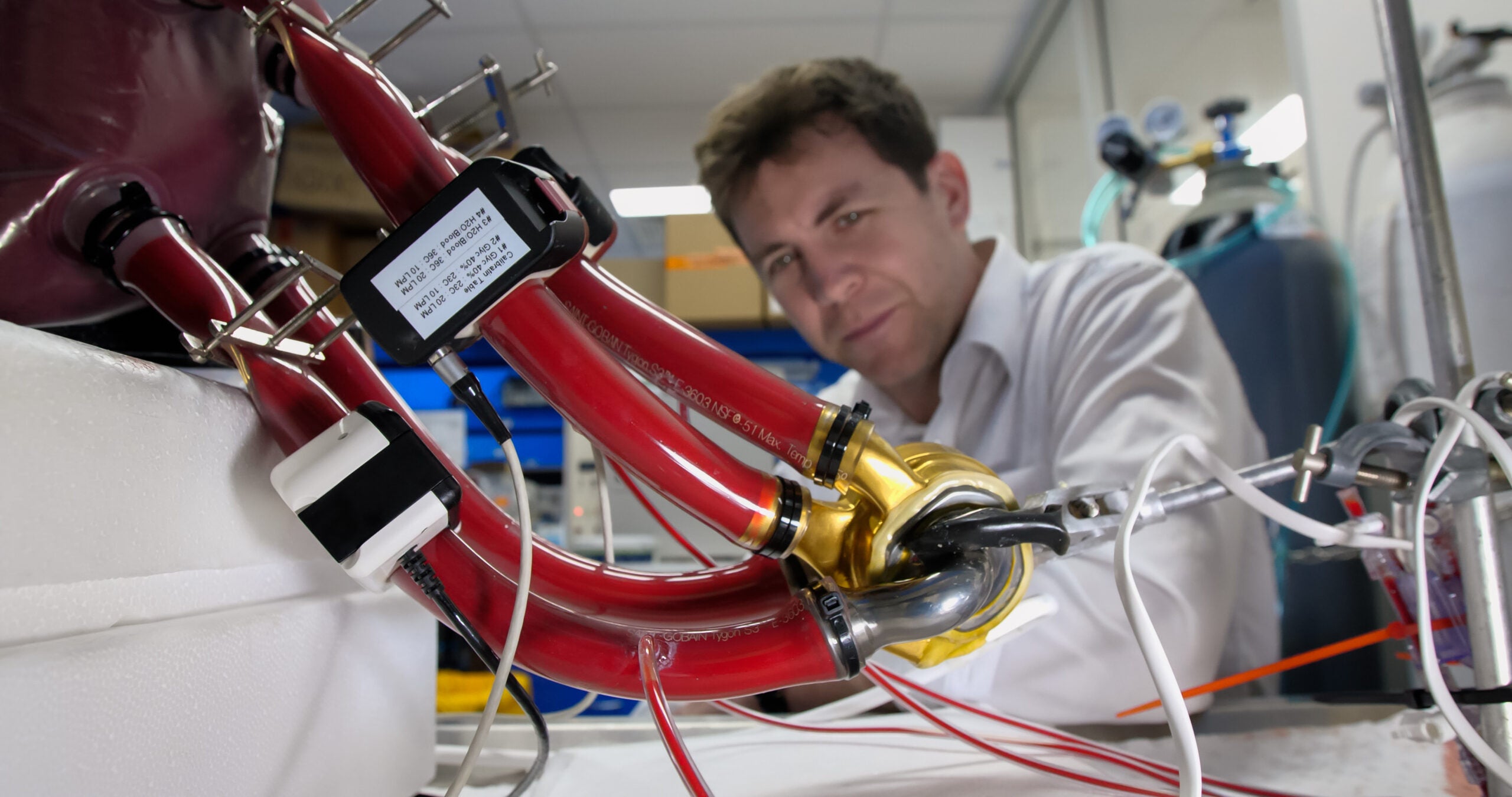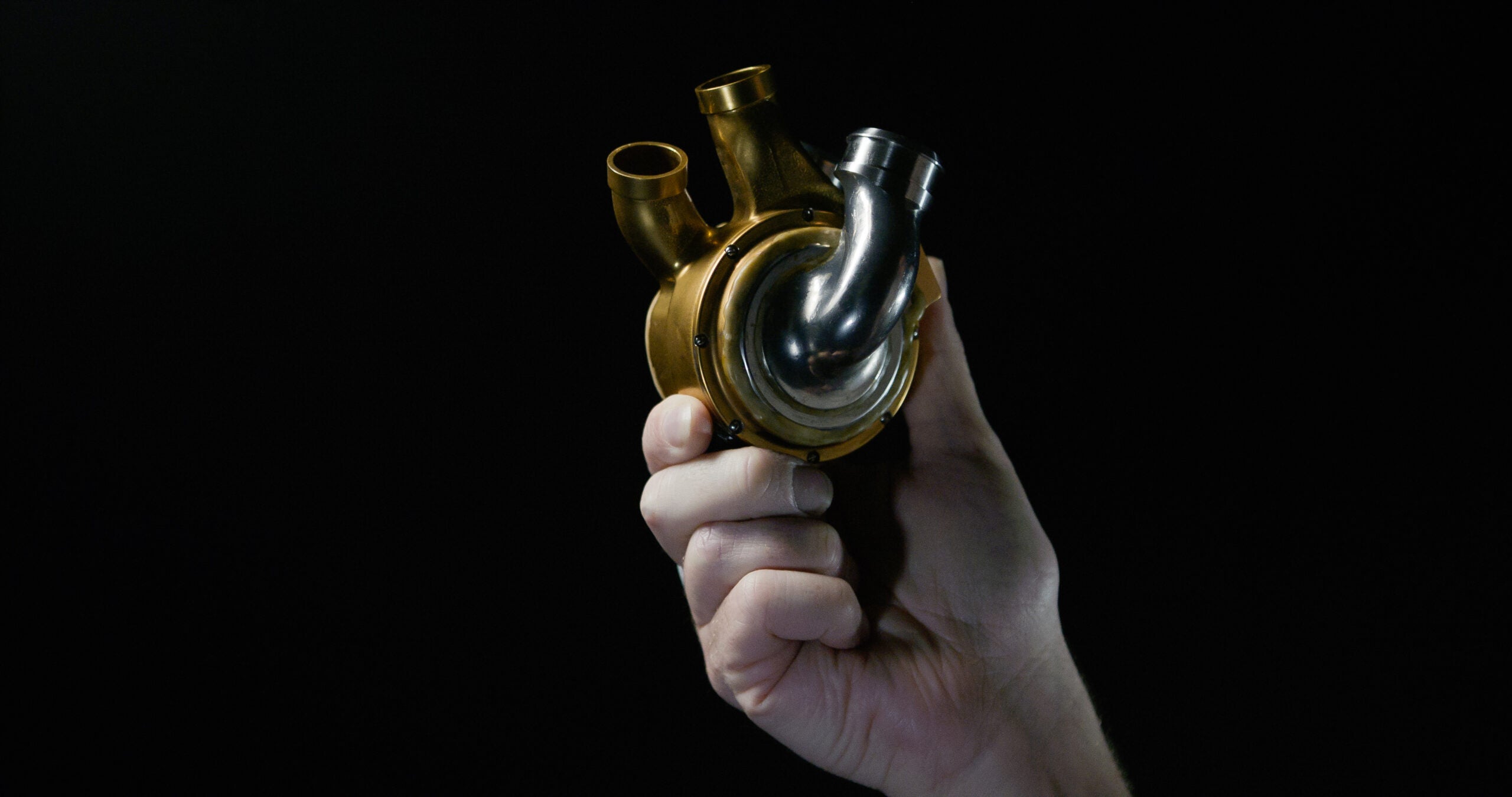
Maglev titanium heart now whirs inside the chest of a live patient
For the first time, the fully mechanical heart made by BiVACOR, which uses the same technology as high-speed rail lines, has been implanted inside a human being. The feat marks a major step in keeping people alive as they wait for heart transplants.
Maglev titanium heart now whirs inside the chest of a live patient
By Michael Franco
July 26, 2024

The BiVACOR total artificial heart is about the size of a large fist
BiVACOR
View 2 Images
For the first time, the fully mechanical heart made by BiVACOR, which uses the same technology as high-speed rail lines, has been implanted inside a human being. The feat marks a major step in keeping people alive as they wait for heart transplants.
The total artificial heart (TAH) was implanted as part of an early feasibility study overseen by the US Food and Drug Administration. According to a statement from the Texas Heart Institute where the implantation surgery was carried out, the heart "is a titanium-constructed biventricular rotary blood pump with a single moving part that utilizes a magnetically levitated rotor that pumps the blood and replaces both ventricles of a failing heart."
BiVACOR, which has been working on the device since 2013, says that the advantage of using a magnetically levitated rotor to drive the device's blood-circulating function is that there is no friction, which can be such a damaging force to machinery that scientists are looking at ways to reduce its effects. The device is by no means the first artificial heart to be used – the first successful implant took place in 1969 – but it is the first to employ this novel use of maglev technology.
The roughly fist-sized TAH uses a small rechargeable external controller to keep it whirring along and it is able to push through blood at the rate of 12 liters per minute, which is enough, BiVACOR says, to allow an adult male to engage in exercise. The company also points out that other artificial hearts rely on flexible polymer diaphragms to pump blood, but such components can wear out. With just one part suspended in space through magnetism – and no valves – BiVACOR's heart could technically last longer.
BiVACOR founder and CTO Daniel Timms tests the artificial heart
BiVACOR
That being said, the titanium heart is only meant to keep a patient alive while they wait for a heart transplant, which has always been the goal of fully mechanical heart development at this stage of the game.
"This achievement would not have been possible without the courage of our first patient and their family, the dedication of our team, and our expert collaborators at The Texas Heart Institute," said. Daniel Timms, founder and CTO of BiVACOR. "Utilizing advanced maglev technology, our TAH brings us one step closer to providing a desperately needed option for people with end-stage heart failure who require support while waiting for a heart transplant. I look forward to continuing the next phase of our clinical trial.”
That phase will consist of the titanium hearts getting implanted into two more patients who will be closely monitored as they wait for permanent transplant surgery.
Heart failure affects at least 26 million people worldwide. According to the American Heart Association, the demand for heart transplants has doubled over the course of the past 30 or so years, and as a result, there are over 3,400 people waiting for transplants today. If BiVACOR's titanium heart passes its clinical trials, it could go a long way to keeping those people – and many more – alive until their replacement heart comes through.
Source: The Texas Heart Institute







